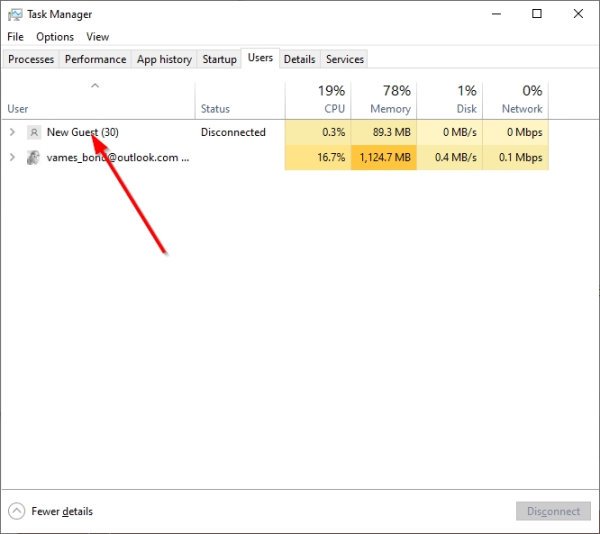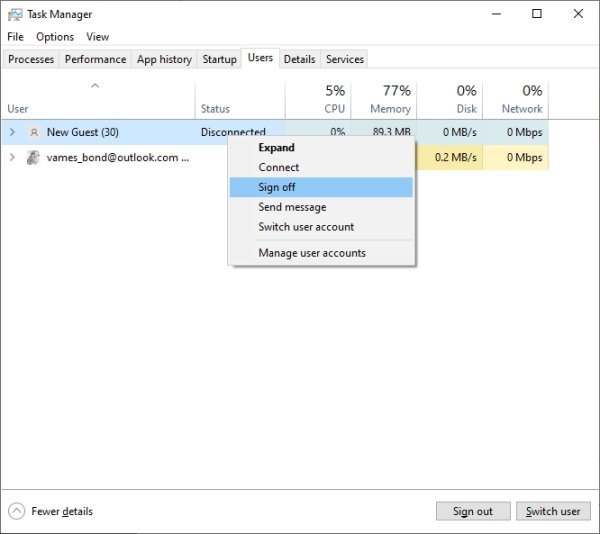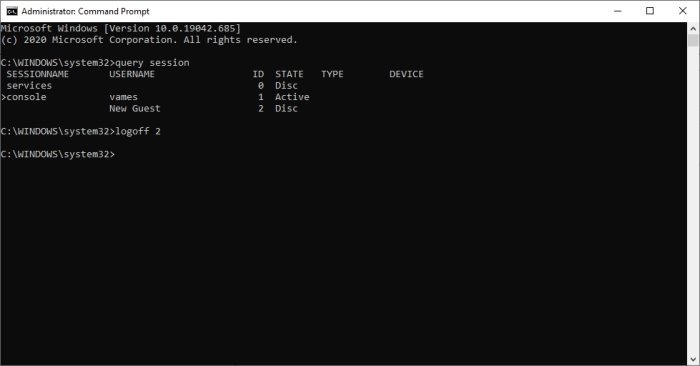In this article, we will explain how to sign out other users who are using the same computer to preserve resources and maintain performance.
Windows 11/10 allows multiple users to have their own accounts, which is a convenient way to keep settings and files separate for a more personal experience. However, if logged-in users don’t sign out, their accounts will continue to run apps, services, and other processes, which can consume significant system resources and negatively affect the performance of the user actively logged in and using the device. In this post, we will demonstrate how to sign out other inactive users from a current session.
In a nutshell, a User Account is an identity created for a person in a computer or computing system. User accounts can also be created for machine entities, such as service accounts for running programs, system accounts for storing system files and processes, and root and administrator account for system administration.
Like most operating systems, Windows supports multiple accounts located on the same computer. It simply means that if you do not want someone to log into your profile and view everything you’ve been up to, then simply create a separate profile.
After the other user has logged into their new profile, they might forget to log out after they’ve finished. When this happens, you’ll discover that their login process is still running in the background and will undoubtedly affect your performance.
How to Log off other users in Windows 11/10
There are two ways to do this, and we are going to discuss them. Do note that you have to be an Administrator to be able to do this.
The best option here is to sign out via the Task Manager due to how easy and efficient it is to get done. Not to mention, many users already have a lot of experience using this tool. The procedure involved is simple:
- Launch the Task Manager
- Select the Users tab
- Locate the User
- Right-click and select Sign off.
Apart from this, you can also Sign out other users by using the Command Prompt. Let us look at both these from a more detailed perspective.
To fire up the Task Manager, please right-click on the Taskbar, then select Task Manager from the displayed options. Alternatively, you could just press Ctrl+Shift+Esc to get it up.

After opening the Task Manager, you should come across a section with several tabs at the top.
The plan is to click on the User tab, which will display a list of all currently logged-in profiles on Windows.

OK, so in order to sign a user out of their profile, you must right-click on the relevant name, then select Sign Off > Sign Out User to complete the task.
Alternatively, instead of right-clicking on the user’s name, simply select it then click the button at the bottom that reads, Sign Out.
Sign out other Users by using the Command Prompt

If for some reason the Task Manager doesn’t work for you, then the Command Prompt is the next best option.
First, open the Command Prompt by searching for CMD via the search box. From the search results, right-click on Command Prompt then select Run as administrator to fire it up. The next step, then, is to copy and paste the following command:
query session
This should identify all users currently signed into the computer. Bear in mind that each user has an ID attached, which is very important.
Now, to log a user off, please use the following command, but be sure to replace “ID” with the correct ID number:
logoff ID
So, if you want to sign out the user with ID #2 attached, please type logoff 2 in the Command Prompt, hit Enter to initiate the removal.
Note that when the Command Prompt is used for this task, it does not confirm whether or not the user has been logged off, so make sure mistakes are not made.
Read: User (SessionID) Could not be logged off, Access is denied.
How do I force log out other users?
To force log out other users, open the Task Manager and click on “More Details”. Then go to the “Users” tab. Right-click on the desired user and select “Sign off.” This will log out the chosen user without affecting your session.
How do I sign other people out of a computer?
To sign other people out of a computer, open Task Manager by pressing “Ctrl + Shift + Esc.” Go to the “Users” tab, select the user you want to sign out, and click “Sign out” at the bottom right. This will log them off and close any open applications associated with their account.